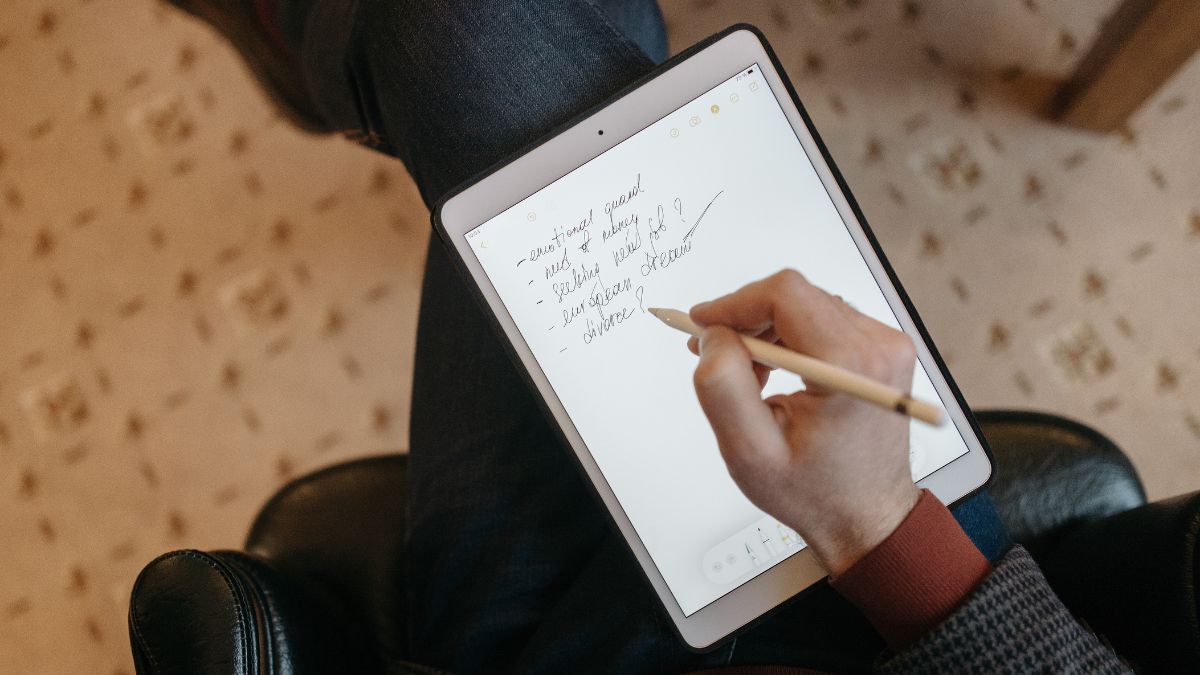The use of a stylus is generally unnecessary for capacitive touchscreens. However, as proven by the likes of Apple and Samsung, a well-designed, optimized stylus can greatly enhance browsing accuracy and response. In fact, to the point that you’d be using them far more often and intuitively as if it was a traditional pen. This then begs the question: does the Apple Pencil scratch screen?
The Apple Pencil by itself does not scratch screens. The stylus tip has a lower hardness rating than the iPad screen. Its responsiveness also prevents users from pressing it hard on the surface in the first place.
So what are the dark marks that form on the iPad screen anyway? Are there any other ways the Apple Pencil could cause minor damage to an iPad? How to prevent these scratches in the first place anyway? All answers to these and more are below.
Can Apple Pencil Damage iPad Screen?
For iPads in particular, the Apple Pencil on its own is unable to leave any actual damage marks on its screen. This is consistent with every single model of the iPad ever released. The actual culprit for those weird dark marks is more often very small, almost microscopic, debris. These get lodged between the iPad and Apple Pencil as it moves through the surface.
Did the Apple Pencil remain unused for an extended period of time prior to reuse? Is the environment somewhat dusty? For both these situations, I recommended that users do a quick, light wipe first using a screen cleaning-optimized cloth such as chamois.
Beyond that, however, the Apple Pencil should not cause any sort of damage to the iPad by itself. Even if quite pointed, the tip’s outer shell is still made out of plastic, and simply glides over the screen. iPads themselves have (advertised) basic touchscreen protection, with a standard Mohs hardness scale rating of 6 or 7.
In addition, an Apple Pencil is usually very responsive. Users generally don’t feel the need to press hard on the screen (a’la classic resistive stylus) just to make it work.
Does Apple Pencil Scratch Side of iPad?
Unfortunately, the Apple Pencil does scratch the side of the iPad one way or another. Statistically, the side of the iPad contacts a much bigger portion of the Apple Pencil’s body. Thus, the chance for debris to come between them becomes many times more likely (compared to screen-based scratches).
Yup, the culprit is once again our age-old nemesis: dust and dirt.
The Apple Pencil’s tip has a very small surface area, and contacts the surface of the screen only most of the time. Its body, however, contacts all the surfaces that you rest it on, including your hand. The smaller, harder particles that stick then “slam” onto the side of the iPad when the Apple Pencil sticks to the magnetic part.
With enough frequency and in time, the debris would form marks and scratches as the weeks and months go by.
Do iPad Screens Scratch Easily?
iPad screens don’t scratch quite “easily”, but they are definitely not scratch-resistant. At least not as scratch-resistant as Apple wants to tout it to be. Over time, iPads will eventually accumulate micro-scratches. This is pretty much inevitable, and it will regularly encounter harder particles or surfaces with increased use.
That being said, iPad screens could still look pretty good despite years of wear and tear. So long as users keep a basic level of maintenance, the unit would never have enough scratches that would significantly reduce the viewing quality of the display.
How to Protect iPad Screen from Scratches?
If your iPad does experience use cases that might cause scratches, we have several options to keep the screen in more or less pristine condition:
Use Screen Protectors
Self-explanatory, and the most universal way of keeping tablet screens generally safe. Take note that viewing quality might be somewhat affected more when using the screen through a protector with scratches later on.
Use Scratchproof Cover Cases
Another alternative is to keep the screen covered with a scratchproof case that envelops the unit. This prevents dust and debris from accumulating on top of the screen when not in use. It will also prevent abrasions when stuffing the unit into tighter spaces (inside a bag with other hard materials inside, for example).
Get a Silicone Sleeve for Your Apple Pencil
Silicone is soft enough that any debris that gets lodged would simply sink inside it when pressed on a screen. This then reduces the chances of causing scratches. It does somewhat reduce the feeling of smoothness when sliding the stylus across the screen, though.
Use Common Sense
Don’t treat your iPad like a wooden chopping board. Keep it upright on a flat surface, for example. Or simply refrain from using the unit when there’s a significant risk of scratches, like on a beach.


